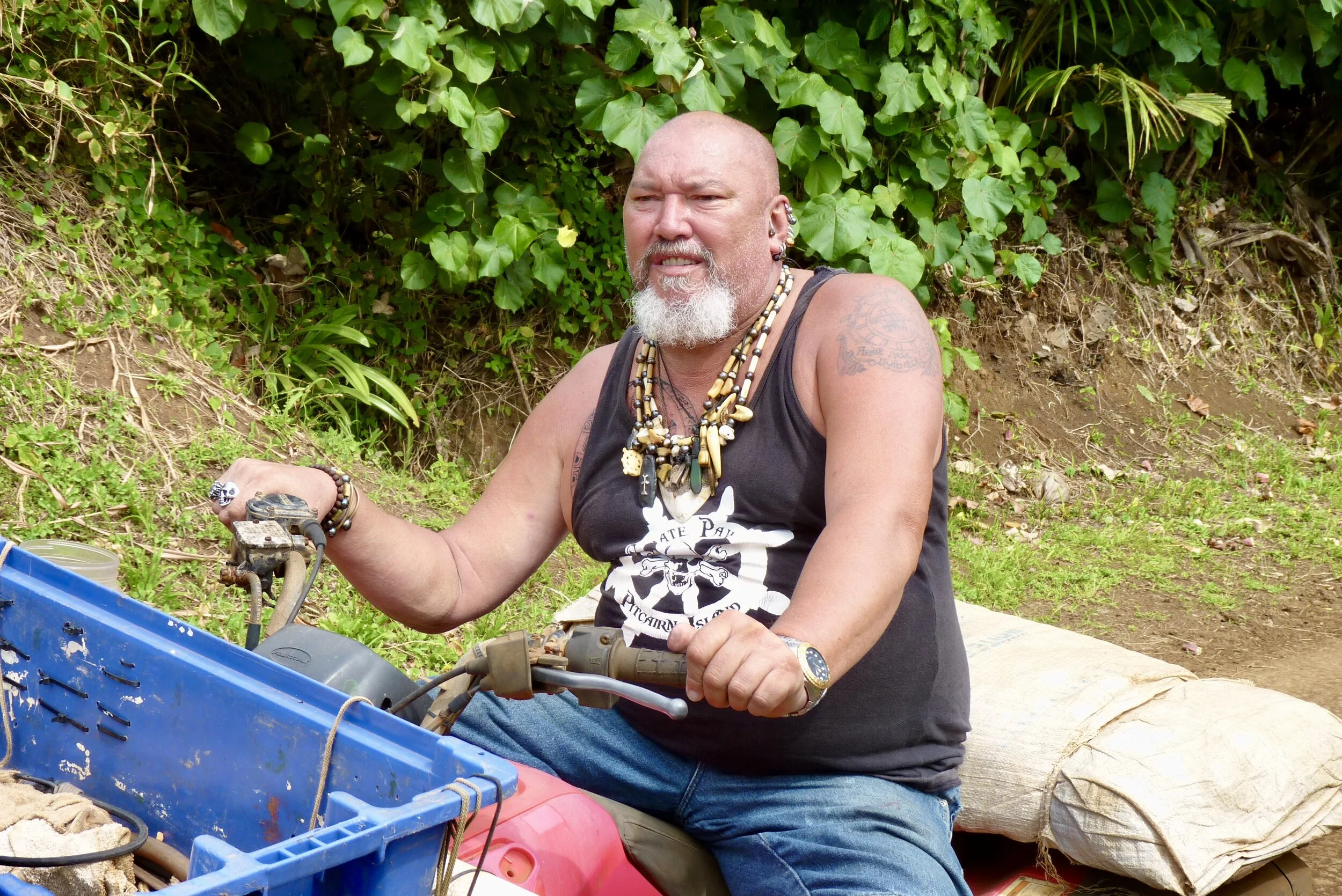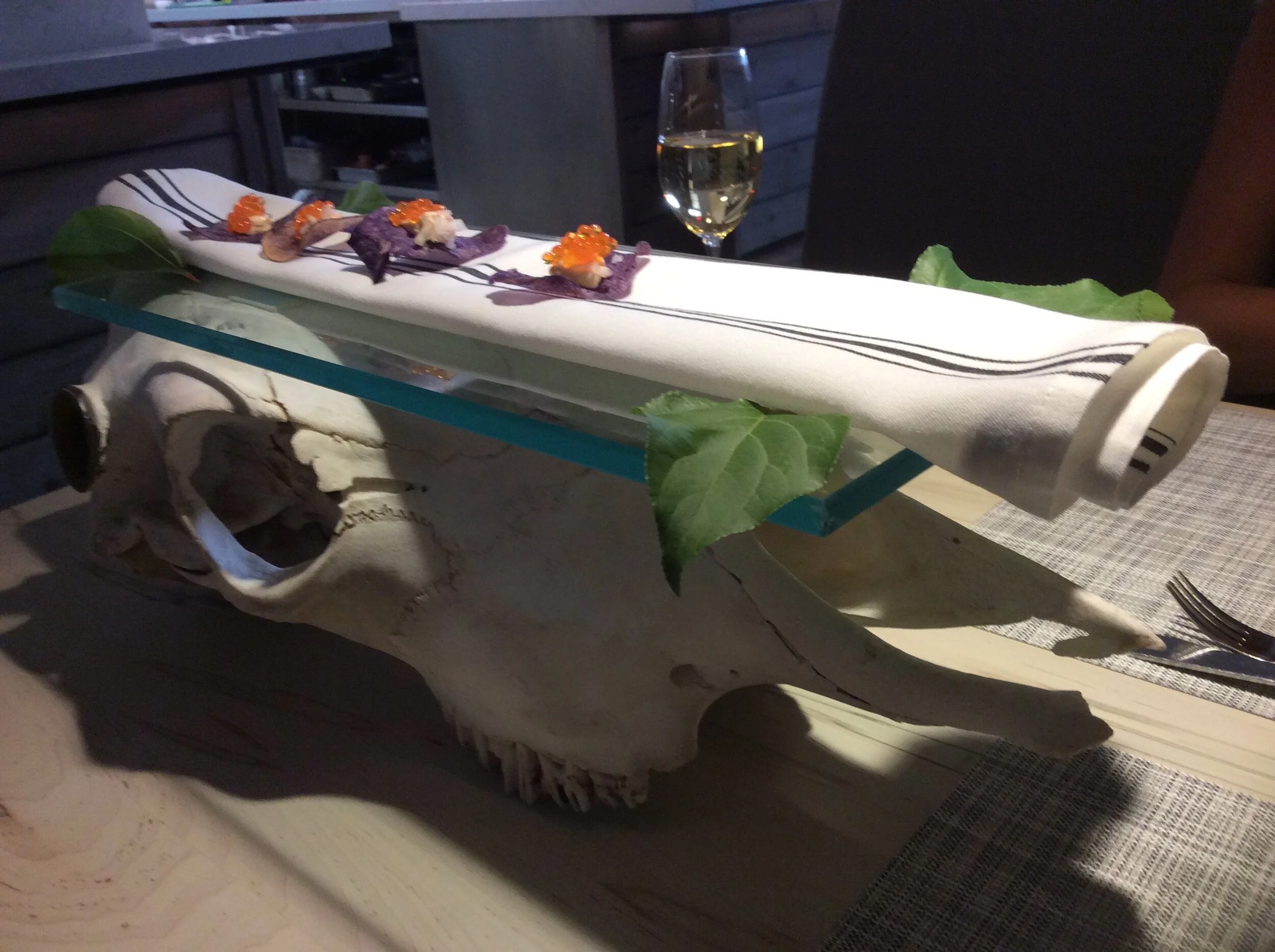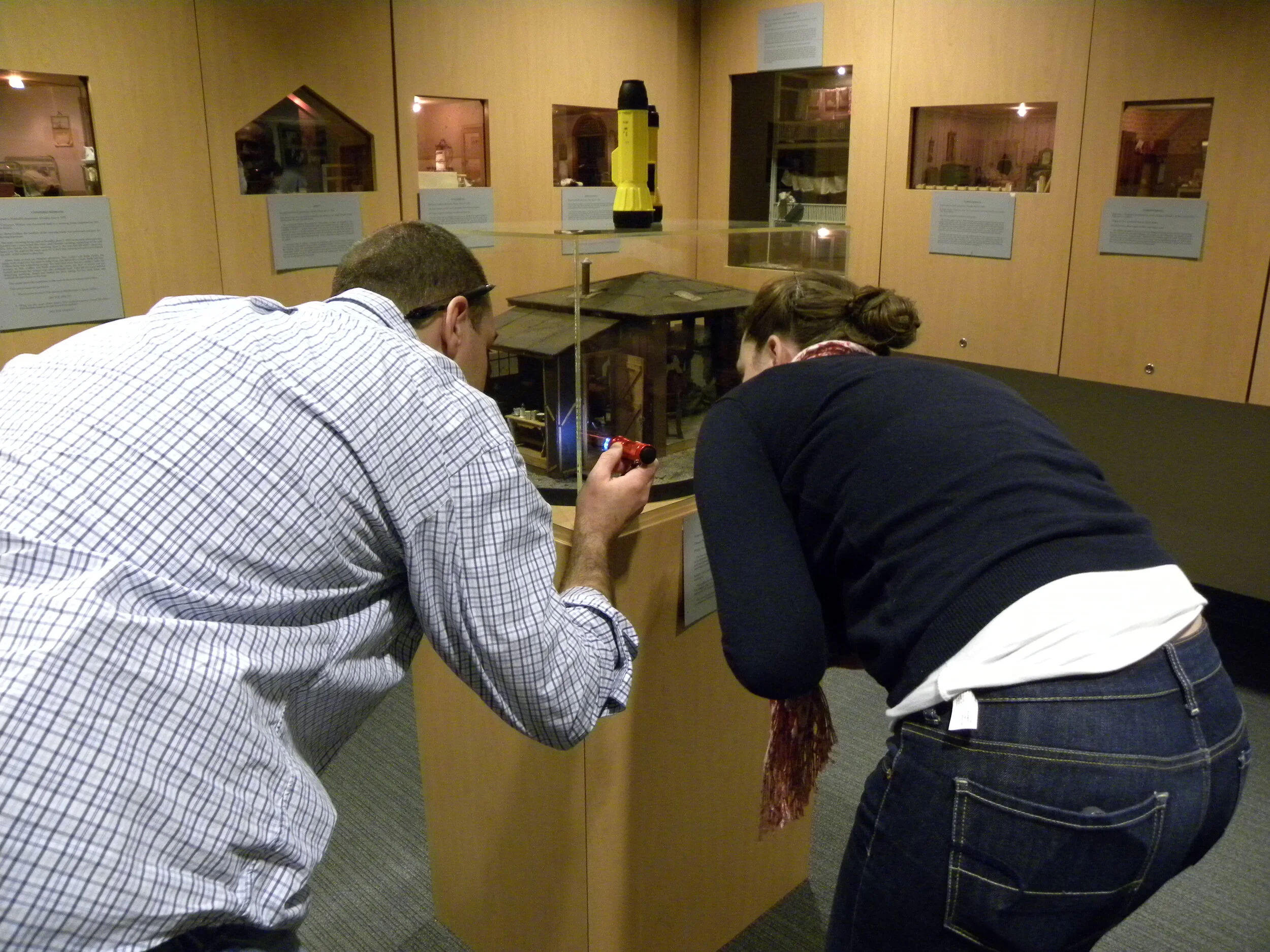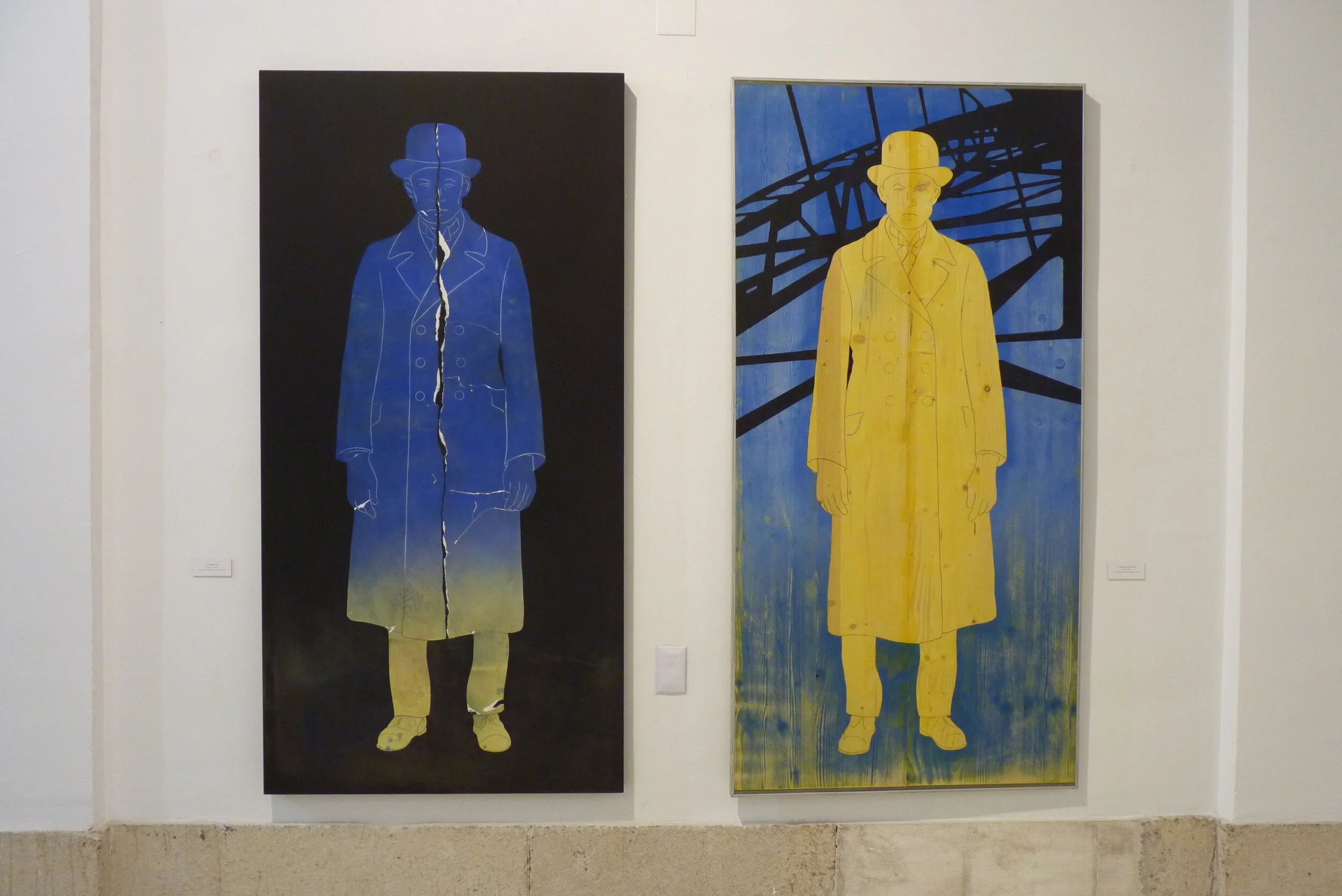Last of the Lancastrians
Russell “Rusty” Waughman is 98 years old and describes himself as “just an ordinary bloke”. Born in County Durham in 1923, he was a poorly child who was confined to a wheelchair with tuberculosis at one point. For 27 years he worked for a packaging company near Kettering and he still lives in the house he bought for “£1,650 with all the extras” in 1956. But for a period of seven months in 1943 and 1944 he inhabited a parallel universe as the pilot and skipper of an Avro Lancaster, the four-engined bomber that flew for the first time 80 years ago this year and became the emblem of RAF Bomber Command and its nighttime operations over Germany.
Waughman, the recipient of a DFC and the Légion d’Honneur, flew 30 ops and once nursed his damaged aircraft home safely to Lincolnshire after a mid-air collision with another Lancaster over Belgium. He is one of 38 veterans (from Australia, Canada, Jamaica and New Zealand as well as the UK) interviewed for a new documentary film about the Lancaster, currently in production and due for release early next year. Lancaster features rarely seen archive film and spectacular air-to-air footage of Britain’s sole airworthy Lancaster, from the Battle of Britain Memorial Flight. But at its heart are the testimonies of the men who flew the aircraft in wartime. The film makers’ previous documentary, Spitfire, was a comparatively upbeat story about the iconic fighter planes that won the Battle of Britain in 1940 and the heroic “few” who flew them. Lancaster, said Anthony Palmer, who co-directs the film with David Fairhead, “is a much darker story and a much bigger story.”
This is because the campaign to bomb German cities remains one of the most contentious Allied actions of the Second World War. The men who dropped the bombs have lived with a stigma that no other wartime service has had to carry. As one veteran – who flew 77 operations – puts it in the film, “If you mentioned [after the war] you were in Bomber Command, you were looked on as though you were a murderer.”
Following the German Blitzkrieg of 1940-41 on London, Coventry and other British cities in which 43,000 civilians were killed, Britain pursued a policy of “area” – blanket – bombing of German cities that resulted in the deaths of hundreds of thousands of civilians (there is no definitive figure). The death rate among the air crew was colossal. Of a total of 125,000 Bomber Command crew (every one a volunteer) who flew on combat missions, 55,573 were killed, with an average age of 22. But after 1945 the questionable ethics of area bombing and the high civilian death toll became a source of official disquiet and the veterans of Bomber Command were never given the recognition they feel they deserve. No campaign medal was struck, no national memorial erected to those 55,573 until nearly a lifetime had passed and most veterans had already died (the Bomber Command Memorial in Green Park, central London was unveiled by the Queen in 2012, having been built with funds raised by the public).
The controversy was re-ignited recently when the Canadian writer Malcolm Gladwell described Sir Arthur “Bomber” Harris, the wartime head of Bomber Command, as a “psychopath” in his new book The Bomber Mafia. Harris is staunchly defended by the veterans while historians such as Richard Overy, a leading authority on the wartime bombing strategy, use more measured language than Gladwell to reach critical conclusions of their own on the man who warned the Nazis, “They sowed the wind and now they are going to reap the whirlwind”. But where does that leave the actions and reputations of the men who carried out the directive of the Air Ministry to destroy the “morale” of the German people?
“We tell our story with no agenda and we tell it through the eyes of the guys who were there, we don’t have experts in our film,” said Lancaster’s co-director David Fairhead. As independent film makers Fairhead and Palmer are no strangers to obstacles and frustrations and indeed due to the Coronavirus pandemic are still seeking funds to complete the documentary to their satisfaction. But when they embarked on the project in 2018 their main enemy was time as the youngest of the surviving veterans was 95. “It was by a miracle we got all but one of the interviews done before Covid,” said Fairhead. “You look back now and think how close was that? Because we’d never have been able to get to go to see them [during lockdown]. We’ve already lost 14.”
The film makers travelled up and down the country – from Portsmouth to Doncaster – with a vital bit of equipment in the back of the car: an upright chair. “We try not build the whole thing up,” said Palmer. “They say, ‘Well what shall I wear? Shall I wear a suit? Shall I wear my medals?’ No. Wear whatever you want. The only thing we don’t like them doing is sitting in a great big comfortable sofa because they just drift and they look very vulnerable. So we take our own chair along just to be sure. It’s just a conversation.”
The aggregate of these conversations is an archive of nearly 100 hours of personal testimony in which veterans tell their stories for the last time – and in some cases for the first time. While memories of wartime tend to be honed in the telling and re-telling, the Lancaster interviews are often startling in their honesty. “The way the veterans tell their story is different because of their age,” reckoned Anthony Palmer. “If you’d interviewed them when they were 75, they would have been more matter-of-fact about it. But aged 98, 99, there’s a lot more emotion in their memory.” At moments it feels as if these proud, humble old men are getting things off their chest; at others as if they are confronting uncomfortable truths.
Among the most memorable interviewees are Rusty Waughman and George Dunn, who both agreed to talk to the Telegraph. They are indomitable characters – Waughman warmly humorous, Dunn engagingly straight-talking – who still live largely independently; Waughman in Kenilworth, Warwickshire and Dunn in the same bungalow in Saltdean, near Brighton, he has lived in for 50 years.
Waughman flew with 101 Squadron, a “special duties” squadron that carried secret equipment to jam enemy radio signals. This made them especially vulnerable to attack and 101 suffered a higher casualty rate than any other squadron – up to 60 per cent for a brief period in April 1944, he says. “The adrenaline used to pump frantically. When you got used to flying, after your fourth or fifth operation, you didn’t expect to live. Our losses were such that people just disappeared. We didn’t see bodies, we just saw empty beds.”
George Dunn, who spent his civilian life working for the removals firm Pickfords, flew on the Hamburg raids in the summer of 1943 known as Operation Gomorrah which killed between 34,000 and 40,000 civilians; and on the raid on the secret research station at Peenemünde, where V2 rockets were being tested, in which 40 bombers were lost and 500 slave workers killed. He recalled feeling apprehension rather than outright fear. “Don’t forget, we were young men. I was only 19. You just accepted it. We hadn’t got a clue what it was going to be like.”
Crucially they didn’t face the uncertainty alone. Something transformative took place in the cramped fuselage once the crew had climbed in: they coalesced into a single organism and their world shrank to that reality. In the words of the historian Richard Overy, “their moral reference points were their immediate comrades on board and the other flyers around them, not whatever might be happening, invisibly, on the ground.”
This bond started with the “crewing up”, a process that one film interviewee likens to a Monty Python sketch. Newly trained personnel who were mostly strangers to each other were bundled in to a hangar and told not to come out till they had formed into crews. George Dunn captured the haphazard nature of it: “We were all milling around and talking and this chap came up and looked at me. ‘Oh hello,’ he said, ‘I see you’re a pilot.’ I said, ‘Yeah.’ He said, ‘Are you crewed up yet?’ I said, ‘No.’ ‘Well,’ he said, ‘I’m a bomb aimer. I’m looking for a pilot,’ I said, ‘Well, fair enough, we’ll go from here shall we?’”
Somehow it worked. Every crew ended up thinking they were the best and individuals rarely let the collective down. But in case fear got the better of them the RAF had a deterrent in the form of a designation known as“L.M.F.” – Lack of Moral Fibre. Effectively, it branded you a coward if you refused to fly. “Just because you were panic-stricken and fearful and couldn’t operate because of your mental health they made you LMF which is not right at all,” said Waughman. He was threatened with it himself after aborting a mission due to malfunctioning equipment. On another occasion his flight engineer insisted on flying a seven-hour operation despite having “the runs”, just in case he received the dreaded LMF designation. “The effluvia was quite something,” remarked Waughman drily.
It could work the other way. George Dunn was adjudged too brave on one of the Hamburg raids after he tried to fly through a severe electrical storm which iced up the wings and knocked out the airspeed indicator. Eventually he had to turn back but not before suffering some terrifying moments. “The following morning,” he said, “I was called into the flight commander’s office and given quite a severe dressing down. In his words: ‘for endangering the lives of the crew and a valuable aircraft.’ So what do you do?”
George Dunn, who like Waughman was awarded the DFC and Légion d’Honneur, completed his tour of 30 bombing raids just two weeks after his 21st birthday. “People ask me now, ‘How on earth could you have flown a four-engined aircraft at that age?’ We just did it.” He has no doubt that the bombing campaign was justified in the context of a “total war” against such an enemy. “Having seen what had gone on in London and Coventry and all that – we didn’t think of it as revenge but they’re there and they’ve just got to accept it.” he said. “You couldn’t afford to let that cloud your judgement.”
For Rusty Waughman it wasn’t until many years after the war that the enormity of what happened was brought home to him. In 1999 he was invited to Berlin to mark the 50th anniversary of the Berlin airlift, which he had taken part in (having previously flown in bombing raids on the city). On a tour of the city he was shown a building in which hundreds of children had died in an Allied raid. “You suddenly realise: I could have done that,” he said. “These days, now, you think, how many people have I killed?”
He and George Dunn spoke bitterly of Churchill “and all the politicians, so-called” who found it politically expedient after the war to disown what the air crews were asked to do. The veterans have circled the wagons around their own deeds and reputations and Sir Arthur Harris, the man who sent them up in to the dark and dangerous skies night after night, is on the inside of that circle. But at the time he wasn’t universally popular within the RAF. His other moniker, besides “Bomber”, was “Butch” or “Butcher,” thought to be a reference to the heavy losses suffered by air crews.
Much as the veterans would hate to be cast as victims there is a case to be made that they were. As well as the heavy attrition rate and their treatment after the war they were misled over the area bombing policy. Interviewees in the film recall that the pre-ops briefings always emphasised the military or economic nature of the targets and skated over the intended loss of civilian life. Against Harris’s wishes, the bigger picture was shielded from them as it was from the wartime British public. Nevertheless, said George Dunn, they weren’t so naive as to think that civilians weren’t going to be killed: “Let’s face it, take Essen for example, the Krupp works – if you’ve got big factories you’ve got people to work in them. And those people are going to be living nearby.”
The biggest loss of civilian life in one night was in Dresden on February 13/14 1945 when 25,000 perished. It was the single most controversial raid of the bombing war on Germany and to this day Dresden is a byword for the questionable morality of the strategy. Tellingly Churchill omitted all mention of Dresden from his history of the Second World War.
Watching from 50 miles away that night as a firestorm turned the sky red over the city was a schoolgirl called Ursula Van Dam. Now 92, she married an Englishman after the war and ran a hairdressing salon in Hull. Her home town of Chemnitz was also bombed by the RAF, as she described in the film and in a FaceTime call for this article from her bungalow in Cambridge.
“There was a restaurant in the woods, a sort of lodge,” she said. “We said, ‘We’ll go in there, in the cellar. Who will drop a bomb on a forest?’” A bomb landed near the cellar and blew the door off. “The door came flying down into the cellar where we were lying. It was so close. We thought we had had it.” For Ursula and her family, who were half-Dutch, the terror was manifest but it was wrapped in hope. “We were pleased [about the bombing raids] because it meant the beginning of the end,” she said. On the terrible loss of civilian life in Germany she said simply, “It was Hitler’s fault. He was a monster.”
Rusty Waughman left the RAF in 1952 after his first wife developed a terminal illness – a tragedy that he described, without irony, as “fortunate” because the trauma of losing his wife blotted out his memories of the war. But the war was not done with him. He suffered from perforated ulcers “for many many years” that a service medical confirmed were related to his wartime experiences. Anxiety still wells up in his everyday life: “I should be doing this. Have I got time to do this? Going out shopping was ridiculous. Will there be a parking space when I get there? It does leave scars.”
The memory that really haunts him is of a raid on Essen when “the flak and the fighters were massive” and he suffered what nowadays would be called a panic attack. “It was like needles being pushed into your head. My knees were shaking. I couldn’t see properly.” So he lowered his seat so he could no longer witness the horror unfolding in the sky and recited a prayer he had barely thought of since he was six years old: “Now I lay me down to sleep I pray thee, Lord, my soul to keep…” It did the trick. “I never had that fear or terror ever again.”
But the terror hasn’t gone away. It has become part of who he is. Part of who they all are. “When I go to bed at night – it’ll happen tonight – as soon as I pop my head on the pillow I can see flak bursting,” he said. “It only lasts for a few minutes. I know what it is. It doesn’t bother me.”
Published in the Telegraph Magazine on June 19 2021









